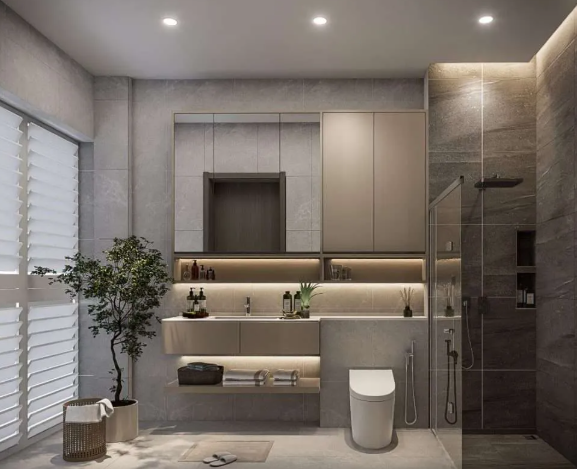When improving your home, you may have heard the term A&A, which stands for Additions and Alterations. A&A works allow homeowners to enhance the functionality and appearance of their homes without completely rebuilding. This approach is especially popular in Singapore, where space is limited and maximizing existing property potential is important.
In this article, we’ll explain what A&A works involve, their benefits, and how they differ from full reconstruction.
What Are A&A Works?
Additions and Alterations (A&A) refer to changes made to an existing property to improve its use, comfort, or design. These modifications can range from small interior upgrades to structural adjustments.
Common types of A&A works include:
-
Interior changes – such as updating kitchens, bathrooms, or room layouts.
-
Structural additions – like adding a new room, floor, or extension.
-
Exterior upgrades – improving the façade or roofing for a more modern look.
These projects are regulated by Singapore authorities like the URA (Urban Redevelopment Authority) and BCA (Building and Construction Authority) to ensure safety and compliance with zoning regulations.
Benefits of A&A Works
Choosing A&A over complete reconstruction comes with several advantages:
-
Cost-Effective – Generally less expensive than rebuilding because it uses much of the existing structure.
-
Faster Completion – With fewer steps than full reconstruction, projects often finish more quickly.
-
Minimal Disruption – The home remains largely intact during renovation, so daily life is less affected.
-
Preserves Character – Especially valuable for older homes or heritage properties where you want to maintain certain features.
A&A vs Reconstruction
It’s important to know the difference between A&A works and full reconstruction.
Scope of Work
-
A&A – Modifies the current structure and increases floor area by less than 50%.
-
Reconstruction – Involves demolishing and rebuilding, often with a larger floor area.
Cost and Time
-
A&A – Usually more affordable and faster to complete.
-
Reconstruction – More costly and time-consuming due to the scale of work.
Regulatory Requirements
-
A&A – Requires planning permission and compliance with local building codes.
-
Reconstruction – Needs full demolition permits and must follow current safety and environmental regulations.
Steps to Carry Out A&A Works
-
Consult Professionals – Speak to architects or contractors experienced in A&A works.
-
Plan Submission – Submit detailed plans to URA and BCA for approval.
-
Obtain Permits – Ensure all necessary permissions are in place before starting.
-
Construction – Carry out the approved works efficiently and safely.
-
Final Inspection – Complete inspections to verify compliance with regulations.
Conclusion
A&A works offer a practical way to improve and expand your home without the time, cost, and disruption of full reconstruction. By understanding the process and benefits, homeowners can make informed decisions that best suit their needs. Whether it’s adding a room, renovating interiors, or upgrading the exterior, A&A provides flexibility and efficiency.
FAQs About A&A Works
1. What does A&A stand for in construction?
A&A stands for Additions and Alterations, referring to modifications made to improve a property without fully demolishing it.
2. Do A&A works need approval in Singapore?
Yes, approvals from the URA and BCA are required to ensure the project follows safety and zoning regulations.
3. How long do A&A projects take?
Typically shorter than full reconstruction projects, though duration depends on the scope of work.
4. Can I add a new floor under A&A?
Yes, as long as the increase in floor area does not exceed 50% and complies with regulations.
5. Is A&A cheaper than rebuilding?
Generally, yes, since it involves fewer materials, less demolition, and a shorter timeline.
6. Can I do A&A works on heritage properties?
Yes, but additional guidelines apply to preserve the historical value.
7. Do I need a contractor for A&A?
Engaging a qualified contractor ensures work is compliant, safe, and completed to a high standard.



